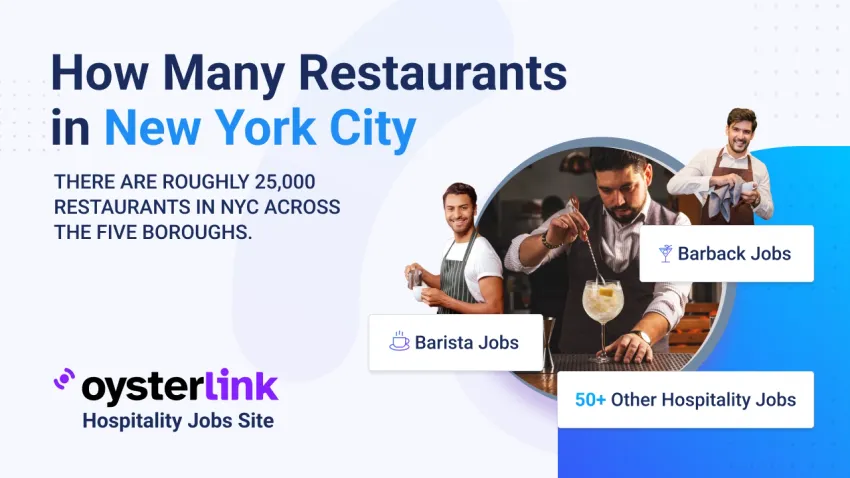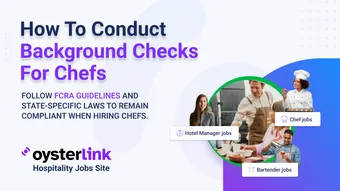Official city records count all licensed food establishments — including everything from fine-dining bistros to food carts — and put the figure in the mid-20,000s.
Meanwhile, online platforms like Google list a somewhat lower number of active restaurants. By early 2025, an analysis of Google Maps business listings found roughly 17,600 restaurants actively listed across the five boroughs.
The true number of eateries in NYC today is probably somewhere in the region of 25,000, especially if you consider a small portion of local establishments aren't listed on Google Maps.
Breakdown by Borough and Category (Table)
Here’s a rough breakdown that combines all of the information into a table for easier digestion:
| Borough | Estimated Restaurants | Key Characteristics |
|---|---|---|
| Manhattan | ~6,418 restaurants | Highest density of restaurants; ~40%+ of city’s dining establishments. Mix of upscale and casual, heavy tourist and business patronage. Lots of full-service restaurants, many bars, relatively fewer chain fast-food outlets. |
| Brooklyn | ~4,845 restaurants | Large and diverse food scene, from trendy eateries in Williamsburg to neighborhood favorites across many communities. Mostly full-service and casual dining, growing number of cafes. Fast food present but overshadowed by local spots. |
| Queens | ~3,394 restaurants | Extremely diverse cuisines (Queens is known for its international communities). Many family-run full-service restaurants and takeout spots. Not as many fine-dining venues, but countless ethnic eateries. Some areas with clusters of cafes and bakeries. |
| Bronx | ~2,078 restaurants | Mix of classic Bronx institutions (delis, pizzerias) and newer restaurants. Fewer total restaurants, but growing slightly post-2020. Concentrations in areas like Arthur Ave (Italian) and around Yankee Stadium and neighborhoods. Fast food chains more common in some parts, but also lots of Latin American eateries. |
| Staten Island | ~884 restaurants | Smallest share of restaurants. Known for Italian restaurants, pizzerias and diners. More car-centric dining (some drive-thrus, etc.). A handful of waterfront seafood spots. Fewer cafes and international options compared to other boroughs, but a tight-knit local food scene. |
Here’s how the numbers look when broken down by category and restaurant type across NYC:
| Category | Approximate Count | Notes |
|---|---|---|
| Full-Service Restaurants (Table-service) | ~12,000+ (majority of total) | The primary sit-down restaurants across all cuisines. Includes everything from diners to fine dining. Main contributor to the ~25k total. |
| Fast Food Chains (QSR) | ~350–400 (major chains) | Only ~359 explicitly “fast food” outlets counted on Google. Includes McDonald’s, Burger King, KFC, etc. Many located in Manhattan’s commercial areas and malls/strips in outer boroughs. |
| Other Limited-Service (Pizza, deli, fast-casual) | A few thousand | Numerous pizzerias (NYC has hundreds of independent pizza shops), sandwich and bagel shops, fast-casual eateries, takeout spots. Not all separately tallied, but a significant segment. |
| Cafes & Coffee Shops | ~2,700 | 1,744 coffee shops + 956 cafes according to 2025 data. Includes Starbucks, Dunkin’ and independent cafes. Often breakfast/lunch oriented. |
| Bars & Pubs | ~1,900 | ~1,897 bars/pubs counted on Google. Ranges from cocktail bars to dives. Many also serve food (some are also counted as restaurants in other categories). |
| Food Trucks/Carts | ~4,000 | Licensed street food vendors citywide. Not included in brick-and-mortar counts. They roam or have fixed corners; offer diverse quick bites. |
| Ghost Kitchens (virtual brands) | Few hundred kitchens (hosting many brands) | An emerging segment. E.g., 5 facilities host 121 ghost kitchen units (cloud kitchens), plus other operators. Potentially hundreds of delivery-only restaurant brands operate in NYC. Not counted in traditional stats, but expanding. |
| Pop-up Restaurants | Dozens (at any time) | Temporary or seasonal eateries. Come and go; not officially counted. Contribute to foodie buzz more than to stats. |
The above counts are approximate and some categories overlap. For instance, a brewery pub that serves food could be counted as both a pub and a restaurant. These figures are meant to provide a sense of scale.
Top 10 Restaurants in New York City
With an estimated 25,000 restaurants in New York City, the dining scene is massive.
Here’s a look at 10 standout spots, selected for their strong ratings, local reputation, popularity and consistently positive customer reviews:
1. Tatiana by Kwame Onwuachi (Lincoln Center, Manhattan)
Tatiana has quickly become one of the City’s most celebrated restaurants thanks to its bold Afro-Caribbean flavors and storytelling-driven menu.
The dishes are creative but never feel overstyled, making the experience both exciting and approachable.
2. Theodora (Fort Greene, Brooklyn)
Theodora is known for its live-fire cooking, giving many of its dishes a warm, smoky depth that feels both rustic and refined.
The intimate dining room strikes the perfect balance between relaxed and elevated.
3. Kochi (Hell’s Kitchen, Manhattan)
Kochi offers a polished Korean tasting menu built around skewers and meticulously layered flavors.
While the presentation is elevated, the dining experience remains warm and inviting rather than overly formal.
4. Borgo (Flatiron, Manhattan)
Borgo brings a cozy, trattoria-style atmosphere to the Flatiron district with Italian dishes that focus on simplicity, balance and freshness.
The pastas are a major draw, but the entire menu feels cohesive and deeply comforting.
5. Gage & Tollner (Downtown Brooklyn)
This beautifully restored 19th-century chophouse pairs old New York charm with classic steaks, chops and seafood done to perfection.
The space feels timeless and special without being stuffy. It manages to be both a destination restaurant and a beloved local favorite.
6. Hav & Mar (Chelsea, Manhattan)
Hav & Mar blends Ethiopian and Scandinavian influences into a modern seafood-driven menu that’s fresh and inventive.
The dining room is colorful and energetic, matching the creativity of the dishes.
7. NY Kimchi (Midtown, Manhattan)
NY Kimchi delivers a lively Korean barbecue experience with sizzling meats, generous banchan and bold flavors.
The space has a fun, buzzy energy that makes it great for groups. It’s consistently praised for high-quality ingredients and a satisfying, interactive dining experience.
8. Semma (West Village, Manhattan)
Semma highlights South Indian cuisine with bold, earthy dishes inspired by rural Tamil traditions.
The flavors are unapologetically authentic, offering a rare and exciting culinary perspective in NYC. It remains one of the city’s hardest reservations because the food is truly exceptional.
9. Crane Club (Chelsea, Manhattan)
Crane Club serves big flavors and dramatic presentations, much of it cooked over open flame.
The restaurant has a high-energy vibe, but the food is thoughtful and well-crafted beneath the buzz. It’s a strong pick for diners wanting a lively night out with genuinely good cooking.
10. Roscioli NYC (SoHo, Manhattan)
Roscioli brings beloved Roman classics to SoHo with pristine ingredients and beautifully simple preparations.
The pastas steal the spotlight, but the antipasti and wine selections make the experience feel complete. It’s one of the most authentic and well-executed Italian dining options in the city.
Official NYC Records and Registered Restaurant Businesses
Below, we’ll break down the numbers using the latest data (circa 2025), drawing from official NYC records, business databases and online listings.
We’ll also examine the distribution by borough and by type of eatery (full-service restaurants, fast food joints, cafes, food trucks, pop-ups, ghost kitchens, etc.), and explain why different sources report different figures.
City Health Department Data
Every year, the New York City Department of Health and Mental Hygiene (DOHMH) inspects thousands of food establishments.
According to the Health Department, New York City has approximately 28,000 restaurants that it inspects each year.
This suggests there are on the order of ~28,000 licensed restaurant and food service outlets in the city (as of the early 2020s).
This number would include any place with a permit to serve food — not just traditional restaurants, but also cafes, some hotel kitchens and likely bars that serve food.
In other words, the city saw steady growth in the number of restaurants through the 2010s, until the COVID-19 pandemic disrupted the industry in 2020.
Business Registrations and Labor Data
Another way to count restaurants is by looking at business registrations or employer data. The New York State Department of Labor reported that New York City’s restaurant industry had 23,650 establishments in 2019.
This figure (23,650) comes from employment records and likely corresponds to firms classified in the food service industry (including restaurants and eateries that have employees on payroll).
It’s a bit lower than the Health Department’s 27k figure, possibly because it might exclude very small businesses or non-employer establishments.
Nonetheless, it confirms that on the eve of the pandemic NYC had roughly 23–28 thousand restaurant establishments operating.
Restaurants Listed on Google and Other Online Platforms
Another way to estimate the number of active restaurants is to use online business listings. Google Maps/Google Business profiles provide a near-real-time directory of places serving food.
A recent analysis (published March 2025) compiled all restaurants listed on Google Maps in NYC and found 17,619 restaurants across the five boroughs.
This count included not only traditional restaurants but also “restaurant-related establishments such as cafes, coffee shops, bars, bubble tea shops and others,” according to the analysts.
In other words, it attempted to mirror the broad definition of dining places, but was limited to those that have an online presence on Google.
Why is the Google-based number (≈17.6k) lower than the city’s official ~27k count? There are a few reasons:
Not all eateries are on Google
Many small delis, mom-and-pop takeouts or food carts might not maintain a Google listing.
The Health Department counts any business with a food permit, but some of those (like a cafeteria or a tiny bodega with a sandwich counter) might not be listed as a “restaurant” online.
Thus, the Google data likely under-counts some no-profile or low-profile establishments.
Temporary closures and data lag
The Google listing count reflects active businesses. If a restaurant closed during the pandemic and hasn’t reopened (or hasn’t updated its status online), it may have been excluded.
The city’s permit data might still count some that are technically licensed even if not currently operating, whereas Google would drop them if they’re marked closed.
By 2025, many inactive listings might have been purged, yielding a more conservative count of actively operating restaurants.
Definition of “restaurant”
Google’s categorization might exclude some places that the City counts.
For example, a bakery or dessert shop might not be tagged as a restaurant on Google, but if it serves food, the Health Department would include it in inspections.
Conversely, Google might list some duplicate or unofficial entries. The analysts who compiled the Google data tried to include restaurants, cafes, bars, coffee shops, etc., so they cast a wide net.
Still, the discrepancy suggests that thousands of food businesses in NYC operate somewhat “under the radar” of online platforms, catering perhaps to local clientele or operating in formats that aren’t fully captured by Google.
For additional context, other online platforms show similar numbers. For instance, the reservation site OpenTable lists more than 17,000 restaurants in New York City available for booking.
As of 2025, about 17.7k were on the platform, which puts it in the same ballpark as Google’s count.
NYC’s influence in the culinary world is also seen in accolades – the city is home to 67 Michelin-starred restaurants in 2025 – but those elite venues are just a drop in the bucket compared to the thousands of eateries overall.
Bottom line: Depending on the source, NYC has anywhere from roughly 18,000 to 28,000 eateries operating. Most commonly cited figures (including by NYC’s tourism officials and food industry groups) put it around 25,000 or more. This makes New York one of the richest cities in the world for dining choices. Next, we’ll look at how these thousands of restaurants are distributed across the city’s boroughs and what kinds of establishments they are.
Restaurants by Borough in NYC
Approximate number of restaurants in each NYC borough, based on Google Maps data (2025). Manhattan contains the largest share of the city’s dining establishments.
Note: Official counts are higher (especially for Manhattan) but show a similar borough ranking.
1. Number of Restaurants in Manhattan
New York City’s restaurants are not evenly spread out – Manhattan, the city’s core, hosts a disproportionate share. Manhattan has the most restaurants of any borough.
The Google Maps data from 2025 tallied about 6,418 restaurants in Manhattan alone, which is far more than any other borough.
This isn’t surprising: Manhattan is the densest borough, packed with office workers, tourists and residents all generating demand for food establishments.
It’s also geographically small but commercially very intense. In fact, by some estimates, Manhattan accounts for roughly 40–45% of all restaurants citywide.
Nearly half of NYC’s dining options are concentrated in Manhattan’s neighborhoods from Harlem down to the Financial District.
2. Number of Restaurants in Brooklyn
Brooklyn comes in second place, reflecting its large population. The Google listing analysis found about 4,845 restaurants in Brooklyn.
Brooklyn is NYC’s most populous borough, and in recent years its dining scene has boomed, with everything from hip farm-to-table spots in Williamsburg to classic pizzerias and Caribbean eateries.
While historically Brooklyn had fewer restaurants per capita than Manhattan, the gap has been closing as Brooklyn becomes a culinary destination of its own.
3. Number of Restaurants in Queens
Queens had roughly 3,394 restaurants listed on Google. The borough is well-known for its diverse, international food scene, offering authentic cuisine from dozens of countries — often in casual, family-run spots.
Its total restaurant count is slightly lower than Brooklyn’s, despite their similar populations.
That’s mainly because Queens has fewer major business districts, so restaurants tend to cluster in key neighborhoods like Astoria, Flushing and Jackson Heights.
4. Number of Restaurants in the Bronx
The Bronx showed about 2,078 restaurants in the Google-based count. It has fewer restaurants per resident than the three larger boroughs, but its food scene is still rich and distinctive.
You’ll find everything from Arthur Avenue’s Italian spots to City Island’s seafood shacks and many Latin American eateries.
Post-pandemic data also shows that the Bronx actually gained a few restaurants compared to 2019. That’s a positive sign of growth, especially since Manhattan lost some during the same period.
5. Number of Restaurants in Staten Island
Staten Island, being the smallest borough by population, unsurprisingly has the fewest restaurants: around 884 restaurants were listed there.
Staten Island’s dining scene is more low-key but still varied — lots of pizzerias, diners and Italian restaurants (Staten Island is known for its Italian-American community).
Its share of the city’s restaurants is small (only ~5% or less), which matches its share of NYC’s population and its more suburban land use.
It’s worth noting that official data (city inspections or business stats) would give higher numbers for each borough, but the borough ranking remains the same: Manhattan > Brooklyn > Queens > Bronx > Staten Island in terms of count.
Also, Manhattan’s restaurant density is extraordinary – with around 6,000+ places in 23 square miles, Manhattan has roughly 270 restaurants per square mile!
Another way to look at it is restaurants per person: citywide, NYC has about 2 restaurants per 1,000 residents, but Manhattan (with its influx of commuters and tourists) effectively has a higher per capita availability than the outer boroughs.
This geographic breakdown helps illustrate the landscape: if you’re in Manhattan, you’re never far from a place to eat, whereas in parts of Queens or Staten Island, eateries might be more spread out.
Types of Restaurants and Food Establishments in NYC
The term “restaurant” covers a huge variety of businesses. From white-tablecloth fine dining to corner bakeries, NYC’s food establishments come in many forms.
Here, we break down the major categories and how many of each there are (as best as the data allows).
Note: Different sources categorize these businesses differently – there’s overlap (for example, a bar that serves food could be counted as both a bar and a restaurant).
1. Full-service restaurants
These are traditional sit-down restaurants where you typically have table service.
They make up the majority of NYC’s restaurant count. Out of the ~25k total, likely well over half are full-service eateries, ranging from casual family-owned spots to high-end gourmet restaurants.
In 2019, NYC had around 23,650 food establishments with employees, many of which were full-service restaurants (this category also includes many ethnic restaurants, brunch spots, steakhouses, etc.).
If we subtract known counts of other categories (fast food, cafes, etc.), we can infer that on the order of 12,000–15,000 of the city’s eateries are full-service restaurants.
These are the places most people think of when they hear “NYC restaurant,” and they span every cuisine imaginable.
Full-service establishments often require more staffing, and indeed, the bulk of the 300,000+ hospitality jobs in the city are in this segment.
2. Fast food and quick-service restaurants
Despite New York’s abundance of unique eateries, the city also has plenty of chain and fast-food outlets.
However, compared to other U.S. cities, the proportion of big-chain fast food locations is relatively small.
According to the Google Maps analysis, there are only ~359 establishments categorized as “fast food restaurants” in NYC.
This likely includes the major burger and fried chicken chains (McDonald’s, Burger King, KFC, Wendy’s, White Castle, etc.).
That number may seem low — and some chains like Dunkin’ or small slice shops may not have been counted — but it highlights an important point.
While you can certainly find a McDonald’s in NYC, fast-food spots are vastly outnumbered by other types of eateries.
Besides the classic fast food chains, NYC has countless quick-service and takeout spots — think pizzerias, sandwich shops, fast-casual salad or bowl places and so on.
Many of these might not fall under “fast food” in Google’s taxonomy, but are part of the limited-service restaurant segment.
For example, NYC is famous for its pizza: there are hundreds of slice joints and pizzerias (some are full-service, many are counter-service).
Similarly, quick-service ethnic eateries (like falafel shops, taquerias and dumpling counters) abound.
If you include all those, the number of “limited-service” restaurants (no table service) in NYC likely runs in the several thousands.
In essence, fast food chains are a small slice (a few hundred) of the pie, but quick-service dining in general is a significant chunk of the city’s food landscape (likely 5,000+ places when you add up delis, takeouts, fast-casual spots, etc.).
3. Cafes and coffee shops
New York runs on coffee, and many coffee shops double as casual eateries.
The Google-based data explicitly counted 1,744 coffee shops and 956 cafes in NYC, for a total of about 2,700 venues focused on coffee or light dining.
This category includes major chains like Starbucks (which alone has hundreds of outlets in NYC) and Dunkin’ (ubiquitous in the boroughs), as well as indie espresso bars and cozy neighborhood cafes.
Some of these places also serve pastries, sandwiches or light meals, blurring the line between cafe and restaurant.
The distinction between “coffee shop” and “cafe” is subtle (possibly the analysis defined coffee shops as primarily beverage-focused and cafes as having more food options). Together, they represent a large segment.
These are generally counted in the overall restaurant numbers, but if someone says “NYC has 25,000 restaurants,” that figure likely includes cafes and coffee shops too.
Roughly 10% of NYC’s counted food establishments are coffee shops or cafes. They are important gathering spots and daytime dining options across the city.
4. Bars and pubs
New York’s nightlife and bar scene is world-renowned. Many bars also serve food (even if it’s just snacks or a limited menu), which can qualify them as “food service establishments” in official terms.
The 2025 Google analysis found 1,897 bars and pubs in NYC. These range from cocktail bars, sports bars, dive bars, to brewpubs.
Some have full kitchens and are effectively both bar and restaurant (think gastropubs or bar-restaurants).
Others are primarily drinking establishments. Depending on who’s counting, bars might be included in the restaurant tally or counted separately.
The city’s 28k inspection number presumably includes any bar that prepares enough food to need a permit. The nearly 1,900 figure from Google gives a sense of the standalone bars/pubs.
If we combine that with the restaurant count: NYC has roughly two thousand bars on top of its eateries. (Interestingly, the NYC Hospitality Alliance reports there are “more than 25,000 nightlife establishments” including bars, clubs, etc., but that is a broader nightlife definition)
Bars and pubs make up perhaps 8–10% of the city’s food & drink venues. Many of those bars are in areas like Manhattan’s Lower East Side, East Village or Brooklyn’s Williamsburg, complementing the restaurant scene.
5. Food trucks and street food vendors
A big part of eating in NYC doesn’t happen in “restaurants” at all, but on the streets.
The city licenses about 4,000 mobile food vendors, which include food trucks, carts and stands selling everything from hot dogs and pretzels to halal platters and tacos.
These are not usually counted in the “restaurant” totals because they’re not brick-and-mortar establishments. (They have their own licensing system.)
However, they are crucial to NYC’s food culture, and on any given day, they feed thousands of people.
Some food trucks are listed on Google or Yelp, but they often move locations, so including them in a count is tricky. The NYC Parks Department also separately lists dozens of food carts and concessions in parks.
6. Pop-up restaurants
Pop-ups are temporary restaurants or Chef-driven events that “pop up” in a location for a limited time (days, weeks or a season).
New York City’s dining scene has embraced pop-ups. For example, a famous Chef might do a three-month pop-up in Brooklyn or a vacant storefront might host a rotating series of guest restaurants.
These pop-ups typically aren’t counted in official stats because they don’t have a long-term license; often they operate under temporary permits or partner with existing licensed kitchens.
It’s hard to put a number on pop-ups at any given time, since by nature they come and go. They likely number in the dozens at any moment.
7. Ghost kitchens and virtual restaurants
Ghost kitchens have expanded quickly in NYC. These are commercial kitchens with no dine-in space, used exclusively to prepare delivery-only meals for online restaurant brands. Many facilities host multiple virtual brands under one roof, which makes them difficult to count in traditional restaurant totals.
A single site can house 20+ concepts, and companies like CloudKitchens operate 5 NYC locations with 121 kitchen units. One report in 2024 estimated ~1,500 ghost kitchens in the U.S., and NYC holds a significant share of that number.
Because these brands focus on delivery apps, many don’t have public storefronts or Google listings, so they’re not included in NYC’s ~17,600 Google-based restaurant count. The Health Department, however, counts each physical kitchen as one permitted facility.
This creates ambiguity: one licensed kitchen may power many online “restaurants,” while some virtual brands operate from multiple kitchens. This is why different data sources capture different totals — city records include most permitted facilities, while online platforms overlook many delivery-only operations.
Conclusion
As we’ve seen, “How many restaurants are in NYC?” can have multiple answers. If one is referring to licensed, permanent food establishments, the number is likely in the mid-20-thousands.
The city’s official inspections cover roughly 28,000 venues, which would include restaurants, cafes and some bars.
For a more conservative count focusing on currently active, public-facing restaurants (the kind you can find on Google and dine in or order from), the number is around 18,000–20,000 as of 2025.
Public figures and publications often round it and say “about 25,000 restaurants” in NYC, which isn’t wrong — it’s a fair mid-point that acknowledges not every last bagel cart is included.









Loading comments...